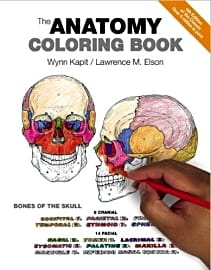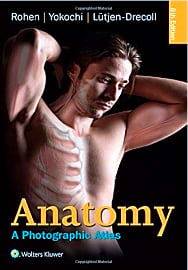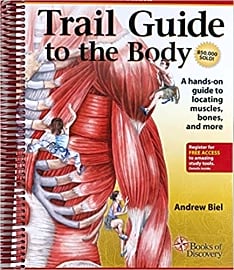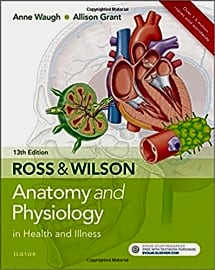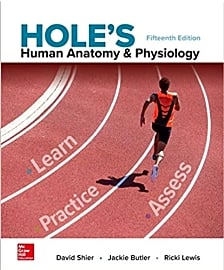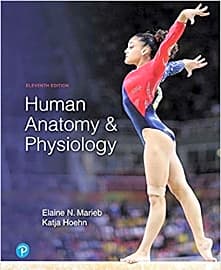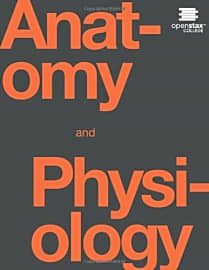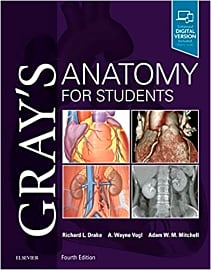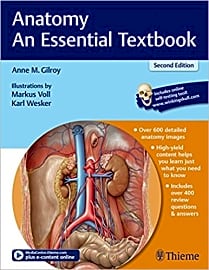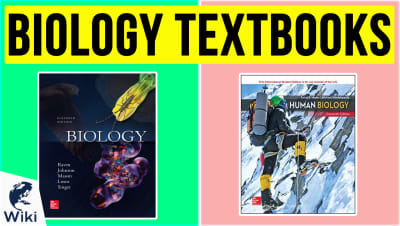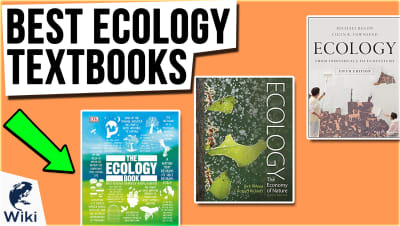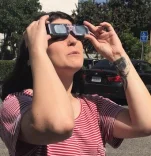The 10 Best Anatomy Textbooks


This wiki has been updated 35 times since it was first published in May of 2016. All students have to shell out a small fortune for their education no matter what their field of study is, but medical students are probably hit the hardest. So, if you know someone who is studying to become a doctor, nurse, or therapist, we're certain that one of these anatomy textbooks would make for a very welcome gift. You'll find options suitable for both beginners and more advanced learners. When users buy our independently chosen editorial choices, we may earn commissions to help fund the Wiki.
Editor's Notes
July 10, 2020:
For our latest update, we ensured every text was in its most recent edition. After that, we noticed that while Pearson's Human Anatomy was a perfectly adequate textbook, it's similar in both the intended audience and structure when compared to Hole's Human Anatomy & Physiology and OpenStax Anatomy & Physiology, so we decided to supplant it with something a bit more homed in.
We replaced it with Ross & Wilson Anatomy and Physiology, which provides the overview needed to get a solid grounding, but with a medical spin thanks to the inclusion of basic pathology and pathophysiology of important diseases and disorders. This one is helpful for nursing students or anyone looking to understand how the body functions in health and in conjunction with age and illnesses.
We kept the beloved classics that many students swear by, which includes Anatomy: A Photographic Atlas, Netter's Atlas of Human Anatomy, and The Anatomy Coloring Book. If you're looking to pick up that last one as a supplement to your other texts, this list of colored pencils should help make sure you have all the hues needed to color coordinate every joint, cell, and tissue properly.
July 02, 2019:
This recent overhaul saw the update of a handful of titles to their most current editions: Hoehn and Marieb's Human Anatomy & Physiology, Hole's Human Anatomy & Physiology, and Gray's Anatomy For Students. We decided to remove Anatomy For Dummies (which remains an accessible and affordable book for the layman) in favor of Trail Guide to the Body, a textbook we felt provided more practical information for those looking to obtain certifications in athletic training and massage and physical therapy, as well as beginning medical students.
All of our selections are written by knowledgeable authors with extensive degrees and field experience. They feature pedagogy designed to help learners retain new information, and a few have complementary online resources for further study. Where certain textbooks are more detailed and helpful depending on your goals (IE Hoehn and Marieb's Human Anatomy & Physiology for sports medicine, Anatomy - An Essential Textbook for beginners and Hole's Human Anatomy & Physiology for those with no prior knowledge), all are authoritatively written.
Atlas of Human Anatomy by Frank Netter and Anatomy: A Photographic Atlas remain two of our top choices, thanks to comprehensive coverage, photos of real cadavers and detailed illustrations, comprehensible text, and exemplary pedagogy. Coming in close behind them is The Anatomy Coloring Book, a useful selection for visual learners and a very budget-friendly supplement for the industrious student.
Special Honors
Complete Anatomy 2020 Used in over 300 universities, Complete Anatomy is an advanced 3D anatomy platform made for teachers, students, and professionals. It provides over 17,000 structures, bone mapping, 1,500 videos, dozens of lectures, an industry-leading female pelvis, and more. The company offers a free three-day trial for users to test it out before they commit to a yearly plan. 3d4medical.com
The Anatomy Of An Anatomy Textbook
These books will tend to put things in simpler terms, though the best of these will never feel like the author is talking down to you.
It should come as no surprise to anyone looking into textbooks covering human anatomy that the body and its functions are incredibly complicated. Frankly, many of these authors undertake a Herculean task just trying to cram the whole of it into a single tome. As you peruse our list, you may notice that some of these authors rather smartly chose to find a more specific angle from which to tackle the subject.
When you set out to choose an anatomy textbook for yourself, you’d do well to consider your specific interests before taking the plunge. If, for example, you want to become a personal trainer, then a text with an emphasis on kinetic movement and the musculoskeletal system might be your best bet. On the other hand, a biologist looking to get into medicine might be better off with a textbook that spends the lion’s share of its time on hormones, glands, and the body’s attempt to maintain homeostasis.
More than likely, if you’re purchasing an anatomy textbook for a class, the title will be handed to you, and whether or not it’s on our list will be of little consequence. But take a good look at that title, and consider the particular niche in which your professor operates. There may be a book on our list that fills in the gaps left by the book you’ve been assigned. Just imagine the look on your teacher’s face when you come in loaded with questions the other students wouldn’t have the information to even ask.
Of course, a big part of learning human anatomy is simply learning where everything is and what everything is called. If you bump your humerus against your desk and exclaim to a room full of anatomy students that you banged your funny bone, you might get some sideways looks. Keep an eye out for any text that might give you interactive or otherwise memorable ways to learn to identify all the parts of the body.
Finally, if you’re not a student, but your interest in the ins and outs of the human body is genuine, you might look for a book that’s written more for laymen than for future doctors. These books will tend to put things in simpler terms, though the best of these will never feel like the author is talking down to you. Who knows? A read like that might ignite your interest enough to actually enroll in a program some time in the future.
The Benefits Of Buying
One of the toughest parts of being a student is finding the extra money to afford expensive textbooks. Many publishers produce a new volume every year, as well, making it very difficult to find a used copy that will allow you to keep up with the rest of the class. As a result, a lot of students have turned to renting their textbooks for the semester, rather than buying them.
There are some benefits to renting over buying, the most obvious of which is the potential to save money.
There are some benefits to renting over buying, the most obvious of which is the potential to save money. College textbook buyback programs tend to be a bit of a joke, giving students a mere pittance for what were much pricier books just a few months prior. But this is true only from one perspective.
If you’re merely counting the money in your bank account, then renting is the way to go. If you’re also taking stock of your physical and intellectual wealth, however, buying begins to look a lot more tantalizing.
Personally, I can say that I kept the vast majority of the books I was forced to buy as a student, from enormous, oversized collections like The Complete Works Of Shakespeare to drier tomes on psychology and astrophysics. And there isn’t one book among them that I haven’t gone back to for one reason or another in the years since I graduated. Is some of the information I went looking for available online? Maybe. But I knew exactly where to go on my bookshelf to immediately refresh my memory and enrich myself. That’s something you can’t put a price on.
A Brief History Of Human Anatomy
The earliest known evidence of the study of human anatomy dates back to an ancient Egyptian document known as the Edwin Smith Surgical Papyrus. This scroll goes into great detail about the functions of several organs, and even describes the connections of the blood vessels to the heart, as well as how to treat a variety of injuries and ailments.
Nearly 2,000 years later, the Greeks made numerous strides of their own.
Nearly 2,000 years later, the Greeks made numerous strides of their own. Quite possibly the most recognizable among these works is the Hippocratic Corups, which contains the well-known Hippocratic Oath that is sworn by the vast majority of the world’s physicians upon their entering the field of western medicine. The Greeks began to differentiate between arteries and veins, to establish the brain as the seat of intelligence, and to perform dissections on executed criminals to further their knowledge.
For many centuries thereafter, medical science seemed content to avail itself of knowledge from textbooks, without many would-be doctors getting their hands dirty by dissecting human corpses. Thanks in large part to his artistic prowess, Leonardo da Vinci added incredible depth to the cannon of anatomical images, himself dissecting around 30 human corpses before being stopped by the Pope.
Throughout the 17th and 18th centuries, anatomical studies became more and more important to the medical fields, and surgical observation theaters were often packed to capacity for the latest experimental procedures. That spirit carried us into our modern age of anatomical research, an age marked by the advancement of cameras, computers, and imaging technology that makes cutting open a cadaver seem almost unnecessary.


